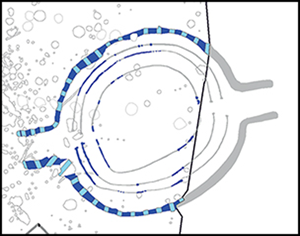Crossref Citations
This article has been cited by the following publications. This list is generated based on data provided by
Crossref.
Czerniak, Lech
Pędziszewska, Anna
Święta-Musznicka, Joanna
Goslar, Tomasz
Matuszewska, Agnieszka
Niska, Monika
Podlasiński, Marek
and
Tylmann, Wojciech
2023.
The Neolithic ceremonial centre at Nowe Objezierze (NW Poland) and its biography from the perspective of the palynological record.
Journal of Anthropological Archaeology,
Vol. 72,
Issue. ,
p.
101551.
Sobkowiak-Tabaka, Iwona
Gerasimenko, Natalia
Kurzawska, Aldona
Kufel-Diakowska, Bernadeta
Moskal-del Hoyo, Magdalena
Stróżyk, Mateusz
Rohozin, Yevhenii P.
Ridush, Bogdan
Levinzon, Yevhenii
Boltaniuk, Petro
Nechytailo, Pavlo
and
Diachenko, Aleksandr
2024.
Risks beyond the ditch: Copper Age tannery from the settlement of Kamianets-Podilskyi (Tatarysky), Ukraine.
Archaeological and Anthropological Sciences,
Vol. 16,
Issue. 4,
Czerniak, Lech
Bayliss, Alex
Goslar, Tomasz
Badura, Monika
Budilová, Kristýna
Lisá, Lenka
Marciniak, Arkadiusz
Matuszewska, Agnieszka
Pędziszewska, Anna
and
Święty-Musznicka, Joanna
2024.
Monumental and Long-Lasting or Temporary and Performative? How did Neolithic Rondels Function? Radiocarbon Dating and Bayesian Chronological Modeling of the Rondel at Nowe Objezierze (Northwestern Poland).
Journal of Field Archaeology,
Vol. 49,
Issue. 5,
p.
335.
Šošić Klindžić, Rajna
Šiljeg, Bartul
and
Kalafatić, Hrvoje
2024.
Multiscale and Multitemporal Remote Sensing for Neolithic Settlement Detection and Protection—The Case of Gorjani, Croatia.
Remote Sensing,
Vol. 16,
Issue. 5,
p.
736.
Whittle, Alasdair
2024.
Kinship questions.
Documenta Praehistorica,
Vol. 51,
Issue. ,
p.
238.
Czerniak, Lech
2025.
Construction, Maintenance and Ritual Practices on the Neolithic Rondel at Nowe Objezierze (Northwestern Poland): The chaîne opératoire of Rondel’s Architecture.
Journal of Archaeological Method and Theory,
Vol. 32,
Issue. 1,
